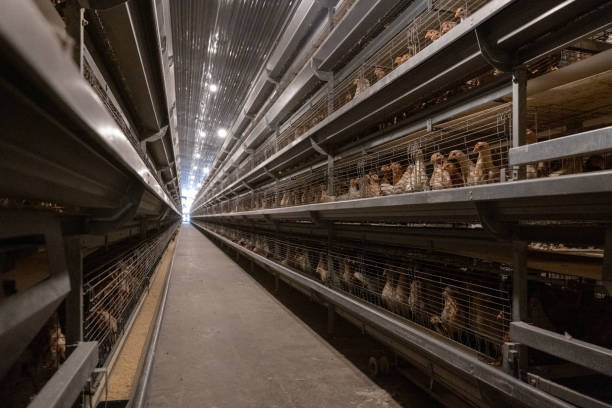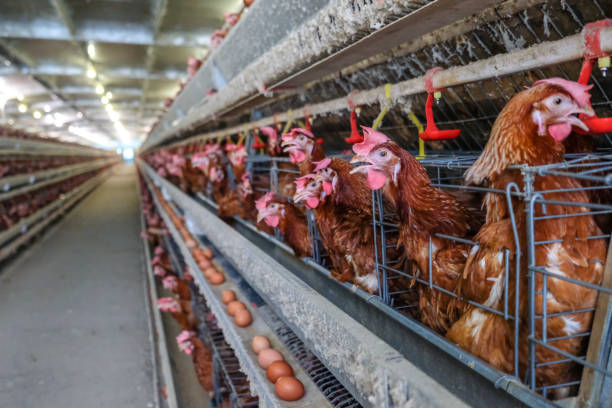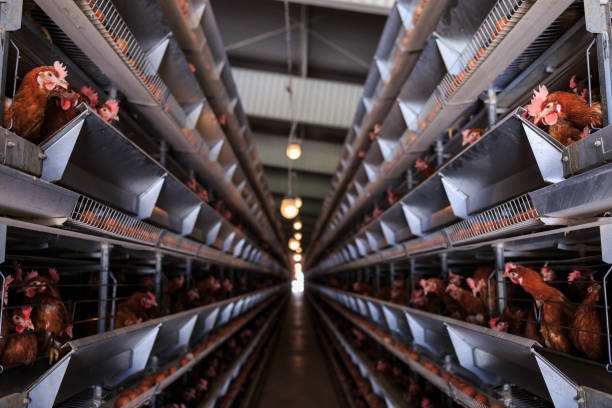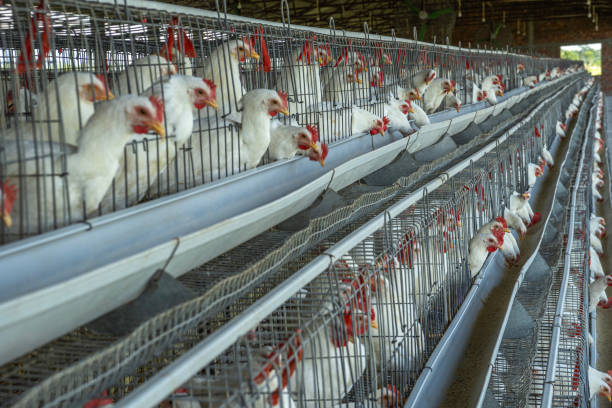
Durable 50,000 Bird Cage Systems for Large-Scale Poultry Farming
Durable 50,000 Bird Cage Systems for Large-Scale Poultry Farming
In the world of poultry farming, efficiency, durability, and scalability are key components of a successful operation. As demand for poultry products continues to rise globally, many farmers are transitioning from small to medium-sized setups to large-scale operations that can house tens of thousands of birds. One of the most significant investments a large poultry farm can make is in a durable 50,000 bird cage system — a comprehensive solution that brings together advanced design, superior materials, and automation to ensure high productivity and animal welfare.
Why Cage Systems Are Essential for Large Poultry Farms
Poultry farming has evolved significantly over the past few decades. Gone are the days when free-range systems or floor housing could handle the needs of industrial-scale operations. Today’s farms require systems that maximize space, improve biosecurity, and allow for efficient feeding, watering, egg collection, and manure management. This is where modern cage systems, especially those designed for large poultry farms like the 50,000 bird capacity systems, come into play.
These cage systems are especially suitable for commercial layer and broiler farms. Whether you’re raising birds for meat or eggs, the right cage system can make the difference between a profitable operation and one that constantly struggles with disease, poor production rates, and operational inefficiencies.
Design and Layout of a 50,000 Bird Cage System
The design of a large cage system is not a one-size-fits-all approach. It must be tailored based on the type of poultry, local climate, available space, and farming practices. However, most modern systems follow a tiered, multi-deck structure that utilizes vertical space efficiently. For a 50,000 bird cage system, you’ll typically find a combination of 3 to 5 tiers, depending on the barn height and layout.
Each tier consists of individual cages that house a set number of birds (usually 4–8 for layers and 2–4 for broilers). The cages are arranged in continuous rows with automatic feeding lines, drinking systems, waste removal belts, and climate control features.
The cages themselves are usually made from high-quality, hot-dip galvanized steel wire to ensure strength and longevity. This material not only resists corrosion and rust but also supports the weight of thousands of birds without deforming over time.
Tiered Systems
Single Row vs. Double Row Designs: Depending on the barn configuration, a farm might choose between a single or double row of cages facing a central aisle. Double rows maximize space but require more sophisticated ventilation management.
Stepwise vs. Sloped Floor Layouts: Some systems use stepwise arrangements where each level is slightly lower than the one above, improving visibility and airflow. Others use sloped systems where feed and manure lines run on a slight incline.
Modular Setup: Modern systems are often modular, which means they can be expanded or modified as needed. This is especially important for farms that plan to grow further.
Key Components of a 50,000 Bird Cage System
Feeding System: Most large-scale systems employ automatic chain feeding lines. These lines ensure that each bird gets the right amount of feed at the right time without waste or overfeeding. The system can be operated manually or integrated with smart controllers for precision feeding.
Drinking System: Nipple drinkers are standard in modern poultry cages. They are hygienic, reduce water spillage, and can be adjusted based on the age and size of the birds. The water lines run the length and height of the system to ensure easy access.
Manure Removal System: Automated manure scrapers or belt systems run beneath the cages, collecting waste regularly. This improves barn cleanliness, reduces disease risks, and eases labor requirements.
Egg Collection System (for Layers): In layer farms, eggs roll out of the cages onto collection belts that transport them to a central collection area. This minimizes breakage and reduces labor.
Ventilation and Environmental Control: With large numbers of birds generating significant heat and moisture, proper ventilation is critical. Fans, cooling pads, and automated controllers regulate temperature, humidity, and air quality for optimal bird health.
Lighting Systems: Proper lighting, whether natural or artificial, plays a crucial role in regulating bird growth and egg production. Modern farms often use LED lighting systems with timers to simulate ideal daylight cycles.
Access and Maintenance: The system should allow farmers to access birds easily for inspection, vaccination, or culling. It should also be simple to clean and maintain, with removable panels and easy-to-reach components.
Benefits of Investing in a Durable 50,000 Bird Cage System
Higher Stocking Density
With a well-designed cage system, farms are able to accommodate up to 50,000 birds in a much smaller footprint than traditional systems. This allows for efficient land use, especially in areas where space is at a premium.
Labor Efficiency
Automation features such as feeding, watering, and manure collection significantly reduce the amount of manual labor required. Tasks that used to take hours can now be completed in minutes, freeing up time for more critical management activities.
Improved Biosecurity and Disease Control
Cage systems allow for better separation between birds and their waste, reducing the risk of disease outbreaks. The elevated design keeps birds away from feces, minimizing contamination and infection risks. Plus, cage systems are easier to clean and disinfect between flocks.
Consistent Production
When all birds have equal access to food, water, and light, production becomes more predictable and consistent. Cages help reduce issues like aggressive behavior and uneven growth, ensuring that most birds perform at a similar level.
Cost-Effectiveness in the Long Run
While the initial investment in a 50,000 bird cage system is considerable, the long-term cost savings through improved productivity, lower mortality rates, and reduced labor make it a worthwhile investment. A well-maintained system can last for 15–20 years.
Choosing the Right Supplier for Your Cage System
Selecting the right supplier is just as important as the system itself. The poultry equipment market is vast, and not all suppliers offer the same quality and support. This is where Livi Machinery stands out as a trusted name in the industry.
Why Choose Livi Machinery?
Livi Machinery specializes in designing and manufacturing high-quality poultry cage systems for large-scale operations. With years of experience and an international reputation, we offer turnkey solutions tailored to your specific needs, whether you’re raising layers or broilers.

Here’s why we are the preferred supplier for thousands of poultry farms worldwide:
Custom Designs: We understand that every farm has different space, climate, and operational requirements. That’s why we work closely with our clients to provide customized cage systems.
Premium Materials: Our cages are made from high-tensile galvanized steel wire, ensuring strength, durability, and resistance to environmental factors like corrosion and moisture.
Fully Automated Equipment: We integrate modern automation into our systems to help you run a more efficient and profitable farm.
Comprehensive Support: From design to installation and after-sales service, we offer full lifecycle support to ensure your operation runs smoothly.
Global Experience: Having successfully delivered systems to farms in Africa, Southeast Asia, the Middle East, and South America, our team has extensive experience working under diverse conditions and local requirements.
Installation and Operation of a 50,000 Bird Cage System
Setting up a large poultry cage system isn’t just about placing cages in a barn. The entire facility must be designed and equipped to accommodate the system effectively.
Barn Requirements
Size and Dimensions: A barn for a 50,000 bird operation should be spacious enough to hold the cages, service aisles, and necessary equipment. Typical barns range from 100 to 150 meters in length and 12 to 16 meters in width.
Roof Structure: The roof should provide good insulation and adequate ventilation. Depending on the region, evaporative cooling systems or tunnel ventilation might be necessary.
Electricity and Water Supply: Reliable access to electricity and water is essential for powering lighting, ventilation, feeding, and drinking systems.
Installation Process
The installation of a 50,000 bird cage system typically involves the following stages:
Site Assessment: A complete overview of the barn structure, layout, and existing equipment is conducted.
System Delivery: All cage components, automation systems, and supporting equipment are delivered to the site.
Cage Assembly: Technicians assemble and install cage units according to the layout plan.
Automation Integration: Feeding lines, drinker lines, manure belts, and control panels are installed and connected.
Testing and Commissioning: The system is tested thoroughly to ensure everything operates efficiently before birds are introduced.
Training and Support: Farmers and staff receive on-site training to operate and maintain the system.

Operation Tips
Regular Maintenance: Keep all mechanical systems in good working condition. Clean manure belts daily and inspect drinking and feeding lines regularly.
Biosecurity Measures: Limit human and animal access to the poultry house. Have footbaths and clean overalls readily available.
Monitoring and Adjustments: Use digital tools to monitor temperature, humidity, and bird behavior. Adjust systems as needed based on environmental changes and bird age.
Real-World Performance of Large Cage Systems
Farms that have integrated durable 50,000 bird cage systems report significant improvements in production efficiency and cost management. For example, a poultry operation in Nigeria increased its egg production by 30% within six months of installing a Livi Machinery cage system. Bird health improved due to better waste management and ventilation, and feed conversion rates improved as well.
Similarly, a broiler farm in Indonesia reported a drop in mortality and higher average weights per bird after switching to a multi-tiered, automated cage system. The farm owner attributed this success to the even distribution of feed, controlled environment, and better access to water.
Conclusion
When it comes to large-scale poultry farming, choosing the right infrastructure is critical. A durable 50,000 bird cage system isn’t just a purchase — it’s a long-term investment in the future of your poultry business. By leveraging modern design, high-quality materials, and automation, these systems provide unmatched efficiency, biosecurity, and productivity.
At Livi Machinery, we are committed to helping poultry farmers worldwide build sustainable, profitable operations with reliable and advanced cage systems. Whether you’re starting fresh or upgrading your current setup, we’re here to provide the expertise, equipment, and support you need.

If you’re ready to take your poultry farm to the next level, contact us today to discuss your requirements and get a customized 50,000 bird cage solution that meets your needs.
